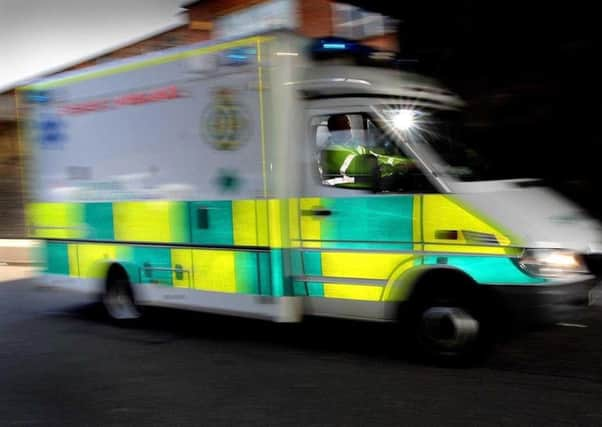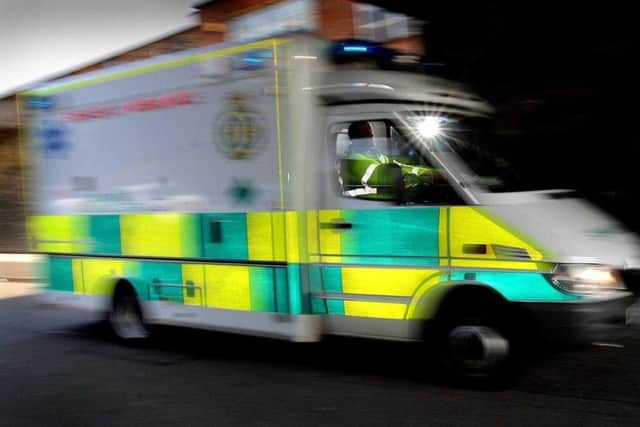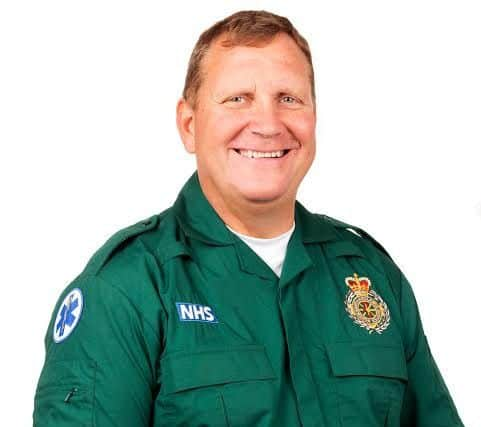Paramedics fail to meet emergency response targets as funding cuts bite


But bosses at the North East Ambulance Service say they are the least funded in the country and it is the only service to be graded as good in all areas in the country.
NEAS reached just 68% of the most serious cases in the required eight minutes, against a national target of 75%.


Advertisement
Hide AdAdvertisement
Hide AdThe National Audit Office (NAO) said services nationally are facing rising demand and increased funding for urgent and emergency care has not matched rising demand, and future settlements are likely to be tougher.
The report shows that during the last financial year, the service answered 68.1% of red one calls - where someone has suffered a suspected cardiac arrest or stopped breathing - within eight minutes. The Government’s target is 75%.
In the case of red two calls - where a patient has other life-threatening injuries - it made the eight minute target in 68.6% of cases, lower than the 75% target.
The number of red one and red two calls responded to within 19 minutes was 92%, with the target set by officials 95%.


Advertisement
Hide AdAdvertisement
Hide AdThe document also sets out that green one calls, where ambulances are sent with blue lights and sirens, which has a target of being reached in 20 minutes in 75% of cases were answered in that time in 48%. There were 11,681 call outs in that period.
Green two calls, which also get the same response and aim to be reached within 30 minutes in 75% of cases, hit a 44% rate, with 121,716 call outs.
Green three alerts, where a telephone assessment should be made within 20 minutes and get a face-to-face response within an hour and has the same target, had a 67% success rate, with 13,374 calls.
Paul Liversidge, chief operating officer for North East Ambulance Service, said: “The National Audit Office report shows that the North East Ambulance Service performs comparatively well against other ambulance services, particularly when it is seen that NEAS has the lowest income per head of population: £26.70 compared with £36.60 for the most costly ambulance trust, and given the universal pressures placed across all of our urgent and emergency care services.


Advertisement
Hide AdAdvertisement
Hide Ad“We are still reaching around 370 potentially life-threatening incidents within eight minutes every day – the same figure we were achieving three years’ ago when our performance standard exceeded the national targets. However, the proportion of incidents assessed as being potentially life-threatening has increased, which has meant that although we continue to respond to a similar number of incidents in eight minutes, this converts to a lower percentage of total incidents.
“This is a difficulty we have in common with ambulance trusts across the country; particularly relating to increased demand on 999 and delays in handover of patients at hospital.
“In addition, we have seen our job-cycle times increase by an average of 11 minutes as clinical services have centralised on to fewer sites. Ambulances are having to travel further to specialist centres for conditions such as stroke, heart attacks and paediatrics. These services provide better quality care and treatment for patients; but they have stretched our resource further.
“In rating our services as “Good”, the Care Quality Commission recognised the current challenges we face in achieving performance but praised our positive patient centred culture; the significant effort to recruit; learning from incidents; and improving policies, systems and processes.”


Advertisement
Hide AdAdvertisement
Hide AdThe Care Quality Commission has rated it as “good” in all categories, the only trust to do so at the time of the report being put together.
The stats show last year the trust had the lowest ratio of rapid response vehicles to ambulances in England, with 70 double-crewed ambulances and 30 rapid response vehicles.
Figure show it has the highest performance rate across all the trusts for making a vehicle ready for the next call within 15 minutes, with a 82% response rate, with a 85% response rate for its hospital performance in receiving the patient within 15 minutes of ambulance arrival.
But it also shown it had the highest sickness rates across the trusts, with a rate of 6.7% across all its staff. The lowest was the West Midlands with 3.7%.
Pressures facing health services
Advertisement
Hide AdAdvertisement
Hide AdThe rising number of elderly people and patients seeking help for mental health and drink-related illnesses are leaving our ambulance service struggling to cope.
The claim has been made by the National Audit Office after it looked at the increasing demands being put on paramedics and their colleagues.
It also highlighted the availability of primary care services in the community and how patients seek help as reasons why the service is under such pressure.
It has said that between 2009-10 and 2015-16, the number of ambulance calls and NHS 111 transfers nationally increased from 7.9 million to 10.7 million.
Advertisement
Hide AdAdvertisement
Hide AdIntroducing new approaches, such as resolving calls over the phone by providing advice to callers, has helped but there are signs of stress, including worsening performance against response time targets.
The national report found a general consensus that commissioners, regulators and providers place too much focus on response times.
The majority of patients currently coded as red two do not derive clinical benefit from the arrival of an ambulance within eight minutes, but the eight minute target has led to a range of behaviours which undermine efficiency.
This including dispatching resources before it has been determined what the problem is, whether an ambulance is required; and dispatching multiple ambulances to the same patient and then standing down the vehicles least likely to arrive first.
Advertisement
Hide AdAdvertisement
Hide AdIn 2015-16, around 500,000 ambulance hours were lost due to turnaround at accident and emergency departments taking more than 30 minutes, which equates to 41,000 12-hour ambulance shifts.
Transferring the care of a patient from an ambulance to an accident and emergency department is expected to take no longer than 15 minutes, with a further 15 minutes to prepare the ambulance for the next call.
In addition, most ambulance trusts are struggling to recruit and retain the staff they need.
Amyas Morse, head of the National Audit Office, said today: “Ambulance services are a vital part of the health service but much of their ability to work better greatly depends on other parts of the health system.
Advertisement
Hide AdAdvertisement
Hide Ad“Until clinical commissioning groups see ambulance services as an integral part of that system it is difficult to see how they will become sustainable and secure consistent value for money across the country.”